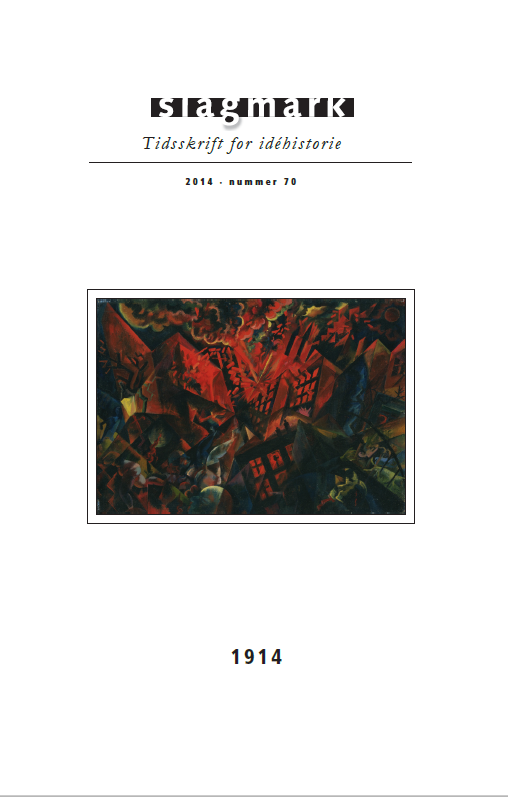Skyttegravenes zoner af meningsintensitet - Karl Ove Knausgårds eksistentielle læsning af første verdenskrig
DOI:
https://doi.org/10.7146/sl.v0i70.104415Nøgleord:
Existential reading, 1914, World War I, poetics, dialecticsResumé
This article investigates how the Norwegian author Karl Ove Knausgård in My struggle (2009-2011) uses his existential reading of 1914 and World War I to nuance our general understanding of the war. Knausgård wants to demonstrate that the collective enthusiasm, which took millions of men by storm, was existentially motivated. The war was able to give the soldiers a sense of meaning, a project and a community; feelings they needed in their civilian lives. Furthermore, Knausgård uses his reading of World War I to make a connection between the soldier’s fight and his own struggle. On the basis of his existential reading of World War I, Knausgård is able to formulate a literary poetics and existential experience. Therefore, Knausgård is able to actualize World War I.Downloads
Publiceret
Citation/Eksport
Nummer
Sektion
Licens
Ophavsretten til artiklerne i Slagmark deles mellem forfatter og Forlaget Slagmark.
Artikler og tekstmateriale publiceret i Slagmark må citeres, downloades og videresendes for ikke-kommerciel brug, under forudsætning af normal akademisk reference til forfatter(e) samt tidsskrift, årgang, nummer og sider.
Brug og distribution af tekstmateriale både i form af papirkopier og elektroniske kopier, til undervisningsbrug på uddannelsesinstitutioner og intern brug er tilladt efter aftale med Copydan Tekst & Node. Brugen skal ske inden for aftalens rammer.
Artikler og tekster må kun genudgives med eksplicit tilladelse fra forfatter(e) og tidsskriftet med en anerkendelse af værkets første publicering i nærværende tidsskrift.





